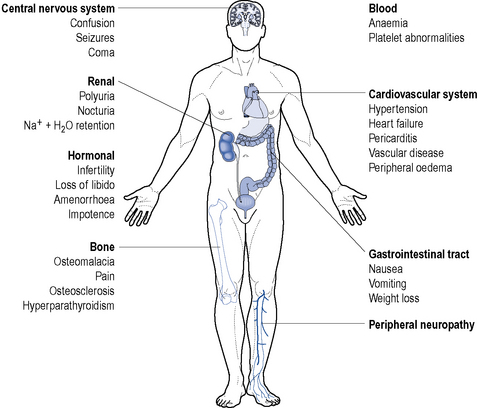What are the clinical findings of CKD patients?
This article is primarily for health professionals.
Often, in mild-moderate CKD (CKD1-2 and CKD3A), there is nothing to find. In 0ther words, the patient is normal. However, at later stages, there are typical clinical findings in CKD.

General
- Uraemic foetor: ammonia-like smell of the breath. This occurs at a late stage
- Excoriations: due to pruritus
- Pallor: due to anaemia
- Cachexia: due to anorexia.
Cardio-respiratory
- Tachypnoea: may be due to fluid overload, and/or anaemia
- High blood pressure (hypertension)
- Hypervolaemia/fluid overload (e.g. peripheral oedema, pulmonary oedema, pleural effusions, ascites), or
- Hypovolaemia/volume depletion
- Pericarditis: late stage finding – may be a rub
- Pleuritis: ditto. There can be a both types of rub.
Other
- Cognitive impairment: specifically affecting language, orientation and attention
- Peripheral neuropathy
- Fundoscopy – may reveal microvascular damage in patients with diabetes or hypertension (diabetic and/or hypertensive retinopathy)
- Bone pain and tenderness.
There may be specific clinical findings depending on the underlying cause of CKD:
- Rashes/finger and nail changes: suggestive of vasculitis, including ANCA-positive vasculitis, and lupus nephritis
- Bilateral loin masses on palpation: suggestive of polycystic kidney disease. May be accompanied by hepatomegaly due to liver cysts
- Bruits (epigastric and femoral): suggestive of renovascular disease
- Palpable bladder: suggests obstructive nephropathy, often accompanied by prostatic enlargement in men.
Summary
We have described what are the clinical findings of CKD patients. We hope it has been helpful.
Last Reviewed on 2 July 2024
